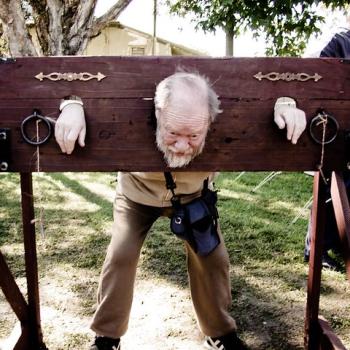
As the shepherd who left 99 safe sheep to find one who needed Him, “the individual had immeasurable worth. [Christ] died not for an impersonal mass of humanity but for persons.” This understanding, shared by Christianity Today, helps us understand how love and compassion for each and every one shines through Christ’s life and teachings as well as in His desire that His followers will live by His example. By considering His actions and His words, every one of us may find ways to value and relate to the individual within those who come into our lives, even among challenges of 21st Century 7-day Christian life.
Every One Worthy and Loved
Sacred Souls
She had suffered an “issue of blood” for 12 years, and had spent “all her living” to consult physicians. But her illness worsened. When she learned where she could find Jesus in a large crowd, “she said within herself, If I may but touch his garment, I shall be whole.” She joined “the press behind [Him],” touched the edge of His clothing and felt the healing power. When He asked “Who touched me?” his disciple Peter was surprised he could feel an individual touch in the crowd. But Christ knew, and she knew (Luke 8:43-48, Matthew 9:20-22, Mark 5:25-27).
He lay “impotent” by the side of the pool, as he had for 38 years. Around him were other sufferers, who were blind, crippled, withered, and otherwise in need of healing. Tradition promised that at certain times an angel “troubled the water” and the first to get in would be healed. But he had no one to help him as others did. As he tried to drag himself to the pool, he was passed by—again and again. This time he heard a voice beside him (John 5:2-22).
She felt her life was hopeless and without meaning. As a widow, she had struggled, and at last her son, her only child, was old enough to help her. As well as the joy of his presence, she needed his physical strength. Widows living alone could starve or come close to it. But he was dead. As he was being carried through the town for burial, a man stepped out of the group looking on. His presence spoke gentle kindness and concern (Luke 7:11-15).
A Savior’s Compassion
Everywhere Christ went, people brought those in need of healing to receive His blessings. A website devoted to compassion has expressed a two-phase experience: “to empathize with someone who is suffering and to feel compelled to reduce the suffering." Compassion is “a tangible expression of love for those who are suffering.” Combining the Latin root pati (to suffer) with the common prefix com (with), compassion teaches us to “suffer with” someone in need.
The Savior loved each and every one, and He gave His compassion “without distinction,” as expressed by Ulisses Soares, an international Christian leader who comes from Brazil.
The Savior, moved by His deep and abiding compassion, interacted with people of His day and helped those who were suffering . . . He extended His merciful hand to those who needed relief from their burdens, both physically and spiritually.
Mr. Soares continued, explaining that these blessings were “everyday expressions of the reality of His pure love for God and His children and His abiding desire to help them.”
Whether they called out from the roadside, waited with a multitude of others, climbed a tree, or waited on a bed to be lowered to him from a roof, each and every one was a precious individual to the Savior, who empathized, reduced suffering, and ultimately gave His life for all of them.
The Worth of the One in the 2020s
It is easy to wonder what the 2020s are doing to the survival of each and every one. Individuals can seem to fade out of our cultures and lifestyles.
Human beings don’t answer telephones at stores or business offices. Computers, phones, or other devices continually make auto-corrections to say something the individual has no desire to say. Every store you might want to order from already knows your size. Can we, as 7-day Christians, keep ourselves from being absorbed by mechanized mass culture?
Living by Numbers
We can choose not to paint by numbers, but we cannot escape the number culture that surrounds us. Numbers of “likes,” easily faked product approval “ratings,” statistics shouted about everything from cancer treatments to breakfast cereals, and hierarchies announcing that someone or something is better than someone or something else. We are supposed to go, do, consume, and even like what the numbers dictate.
Accepting random recommendation numbers is like judging restaurant quality by counting the number of cars in the parking lot at a randomly selected time of day. If you need reliable statistical or otherwise-ranked information that will affect things important to you, go to information sources you know to be reliable. Find out which highly respected people or institutions produce or endorse them. If you are considering published numbers, find out who or what published them.
In the 2020s, online shoppers, customer service callers, and former users of a commercial entity (e.g., tax service) recognize that the voice “conversing” with them seems artificial and may not actually respond to what they say.
Welcome to the world of Chatterbots. These bots combine language processing capabilities of artificial intelligence with some aspects of computer communication to imitate a human chat—both sides of it—without a human present. It may be in the form of texts or text plus voice.
Its operation gathers images from across the internet to put to language. The resulting conversation has been compared to a game of tennis: the ball just goes repeatedly back and forth. We might extend the image to say that the court is very small, and if you happen to be in that small area you get what you need.
A Chatbot compiles information, but it does not create or adapt with what it supplies. And human emotion is outside its experience. A professional marketing writer gave advice that applies to all of us for dealing with a chatbot in our job or personal life. “Play to its strengths: Ask it to summarize, [or] to list . . . . But don’t ask it to connect. That’s your job. That’s what you do best as a human.”
Connecting—Protecting Every One
Connecting is one of the things we do best as humans. But, as an extensive study from Stanford University has found, “modern society is showing an alarming decline in social connectedness.” Others have added this is “a likely byproduct of the reliance on technology versus face-to-face contact.”
M. Russell Ballard, an international Christian leader, commented on how we must preserve this contact with every one.
I believe our Heavenly Father’s everlasting purpose for His children is generally achieved by the small and simple things we do for one another . . . there [should] never be anyone with whom we would not be concerned, regardless of age, race, gender, religion, or social or economic standing. We [should] strive to emulate the Savior and would never be unkind, indifferent, disrespectful, or insensitive to others.
How might we emulate the Savior’s personal connection? We cannot perform the miraculous healings or teach with the power that He did. But we can act and communicate with love. Let’s revisit the incidents in His life already described.
“Self-conscious in her healing, the woman who had had the issue of blood hid at first. Knowing she was discovered, she “came trembling, and falling down before him.” He knew who she was, and he knew her faith, but this was a time for personal contact. Despite the crowd gathered around them, He focused only on her: Daughter, be of good comfort: thy faith hath made thee whole; go in peace” (Luke 8:47-48). He spoke only to her, and His words acknowledged her faith, focusing on her part in the healing, not on His. He closed with a blessing of peace, which she would need as her life continued.
Christ, in His deep compassion for every one, asked gently of the suffering man by the pool of Bethesda, “Wilt thou be made whole?” He knew how long the man had suffered and He knew that he had the faith to be healed. As the man described his problems, the Savior listened only to him, regardless of a crowd of others gathered around healing waters. Christ’s words were direct and couldn’t be doubted: “Rise, take up thy bed and walk.” His focus was on the man, not on His own healing role. The man did as the Savior told him and was immediately well (John 5:2-11).
As the Savior stepped up to her son’s bier, He addressed the grieving widow-mother with compassion in His voice: “Weep not.” He knew why she was weeping, and He knew the exact time the procession would pass. Again ignoring a curious crowd, He turned to speak directly to her son: “Young man, I say unto thee, Arise.” Her son sat up and spoke, and the Savior presented him whole to his mother (Luke 7:11-16). Both mother and son had been saved and restored. He had met the needs of two precious individuals. He did not speak of Himself or call attention to His miracle. Nor did he address the crowd. He simply left mother and son to their joy.
We must preserve every one of the sacred individuals for whom Christ died. We will need to ignore distracting voices—human and inhuman. If we follow Jesus Christ, we can do this, for their great blessing and ours.
3/22/2023 9:54:04 PM





